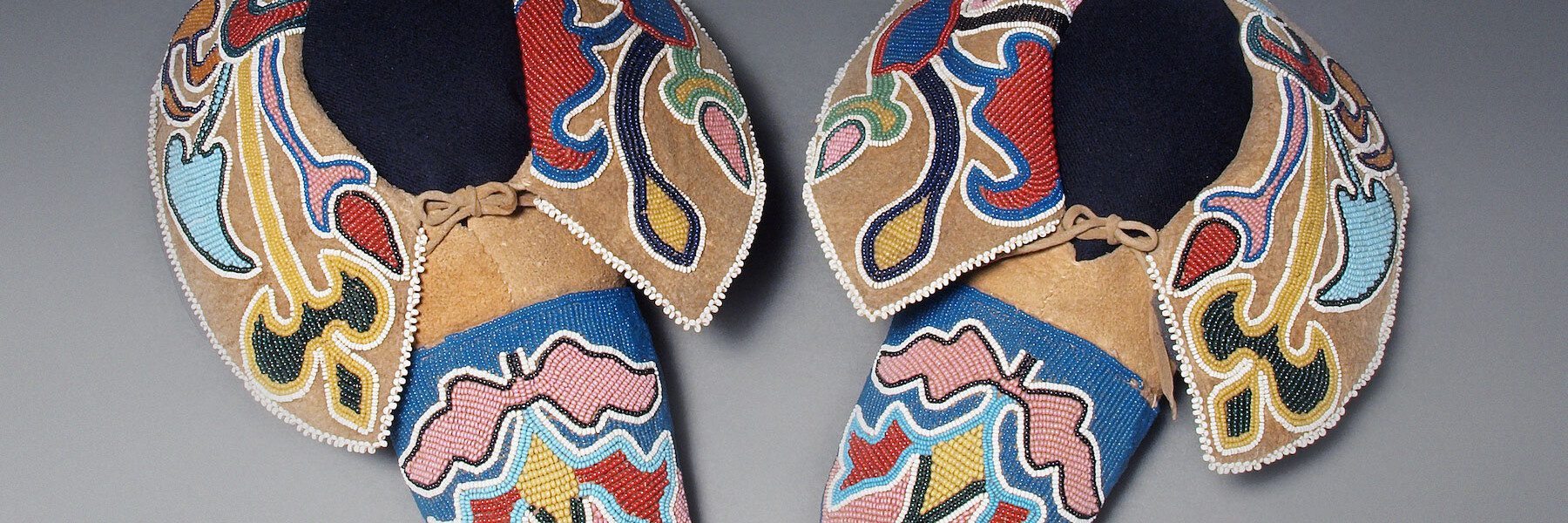FOR IMMEDIATE RELEASE
SHELBURNE MUSEUM TO STEWARD IMPORTANT INDIGENOUS ART COLLECTION
PERRY COLLECTION FORMS CORE OF LARGER NATIVE AMERICAN INITIATIVE
SHELBURNE, Vt. (May 8, 2023)—Shelburne Museum is preparing to steward a remarkable collection of Native American art that represents the most significant acquisition both in size and importance since the museum’s founding. The Perry Collection forms the core of a museum initiative to collaborate with Indigenous nations, scholars and culture bearers to present a model of stewardship for Indigenous creative culture and presentation to a broad audience, Thomas Denenberg, John Wilmerding Director and CEO of Shelburne Museum announced.
The more than 200-item collection of Native American masterworks was assembled over several decades by Anthony “Tony” Perry and Teressa “Teri” Perry. Remarkable for its depth and breadth, the collection is comprised of items predominantly from Plains, Prairie and Southwest peoples. The collection amplifies and diversifies the Native American materials already stewarded by Shelburne Museum. Together, the Perry Collection and the museum’s Indigenous collection represent nearly 80 Tribes.
“Bringing these collections together presents an opportunity to collaborate with Tribes in the study of both historical and contemporary Indigenous material culture and art in a manner accessible to students, scholars and visitors,” Denenberg said. “It also compels us to realize a long-held vision of our founder, Electra Havemeyer Webb, to present a more inclusive view of what constitutes American art by including Indigenous art.”
To create space for engaging with the collection, the museum plans to add to its 45-acre campus the Perry Center for Native American Art, a collaboratively designed building and integrated landscape.
The Perry Collection is being gifted to Shelburne Museum by Teri Perry in memory of her late husband Tony Perry, a noted businessman in Vermont with a deep connection to the region. The Perry Collection is remarkable for its depth, breadth and quality, including superb examples of beadwork, clothing, weavings and pottery predominantly from Plains and Southwest cultures. The collection emphasizes craft traditions in the decades before and after the turn of the 20th century. The collection is organized with concentration in particular singular forms and with items of the highest aesthetic quality and artistic merit.
The collection is especially rich in ceramics from Pueblo peoples, Acoma and Zuni among them, including a group of 48 finely painted water jars, monumental grain storage vessels and large bowls. Visitors can view a selection of pottery from the collection in the exhibition Built from the Earth: Pueblo Pottery from the Anthony and Teressa Perry Collection, on view from June 24 through October 22 at Shelburne Museum.
Moccasins form another area of depth of the collection. Fifty pairs, from the late 19th century predominantly from Plains and Prairie cultures, not only reveal the individual artistry of their makers and traditions of their cultures, but when taken together, create a rich overview of the form. The importance of children and family life are interwoven into the collection. A group of four beaded cradles of Kiowa, Crow, Cheyenne, and Nez Perce origin along with two Lakota beaded baby carriers are recognized as nationally important. The representation of miniatures and children’s articles was a special interest of Tony Perry’s. Toy cradles, moccasins, and storage bags are included, and a remarkable assemblage of 50 dolls originating from Plains and Apache peoples includes numerous rare pairs.
“Tony was always drawn to the multi-dimensional nature of Native American art. He appreciated that this material not only surrounds you in beauty and history, but it also invites a sense of contemplation and spirituality,” Teri Perry said. “The dolls come alive with their story; the textiles retain the vibrancy and energy of their weaver; and the beadwork tells of women creating the most sophisticated designs in firelit spaces. Each piece carries a part of a life and culture and is constantly alive.”
About Shelburne Museum: Shelburne Museum is the largest art and history museum in northern New England and Vermont’s foremost public resource for programming in the arts and humanities. Incorporated in 1947, the museum comprises 39 buildings and 22 gardens on a 45-acre campus. The museum stewards a collection of over 100,000 objects in unique and unparalleled installations of American art and material culture. Programming includes exhibitions and educational programs designed to creatively engage a broad spectrum of audiences and spark conversation and contemplation about the human condition.
Shelburne Museum attracts a multigenerational audience from the region with significant visitation from New York, New Jersey, Massachusetts, Connecticut, and Quebec. The museum holds a special responsibility for serving the Vermont community. Approximately 8,000 students from 100 Vermont schools visit annually, comprising 10 percent of the state’s student population.
Shelburne Museum’s trailblazing founder Electra Havemeyer Webb (1888–1960) repeatedly called for expanding scholarly and popular understanding of American material life as one of the principal collectors who defined the field in the decades that bracketed World War II. A critical example of this impulse is Webb’s deep interest in, and engagement with, Indigenous art and culture, an aspect of Shelburne Museum’s program incompletely realized in her lifetime and of singular importance to the institution today.
High resolution images available upon request.
For media inquiries, please contact:
Leslie Wright
Director of Advancement
Shelburne Museum
lwright@shelburnemuseum.org
802-985-0880
Kristen Levesque
Kristen Levesque Public Relations
kristen@kristenlevesquepr.com
207-329-3090
# # #

